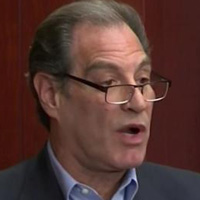
TVN Tech | COVID-19 Delays, Not Derails, NextGen TV Plans

The 2020 rollout of the ATSC 3.0 next-generation standard across the U.S. is still on track, say industry insiders, despite suffering a few short-term hiccups due to the COVID-19 pandemic. Simulcasts of all the major networks in the new standard are slated to be on-air in Las Vegas and Portland, Ore., by early June — about the same time the first 3.0-capable sets will be hitting retail shelves.
They will be bolstered by 3.0 launches in Pittsburgh, Nashville, Salt Lake City and Charleston, S.C., in the first half of 2020, with other big markets including Seattle, San Antonio, Austin and Tampa scheduled to turn on in the second half of the year.
At last year’s NAB Show the country’s biggest broadcasters joined forces to announce they would begin 3.0 broadcasts in the top 40 markets by the end of 2020. Since then, set makers and broadcasters have agreed on the “NextGen TV” consumer brand, a handful of low-power stations have launched 3.0 and the stations in the Phoenix Model Market have produced a detailed 3.0 launch manual.
But details on the national rollout have been scarce, and to date, only 24 applications to broadcast 3.0 have been filed with the FCC. So the industry was looking to NAB 2020 as the place to get more clarity — until the annual convention was canceled on March 11.
The 3.0 stations in Las Vegas and Portland were initially aiming to be on air by April 20, in time for the NAB Show, say executives from Sinclair Broadcast Group and Nexstar Media. But with the goal of NAB removed and vendors unable to travel to stations to install equipment, those launches have been pushed back until after the May sweeps. Las Vegas is now scheduled to turn on May 26 and Portland on June 9.
“It was not realistic to maintain the original launch dates without putting people at risk,” says John Hane, president of Spectrum Co., the coalition founded by Sinclair and Nexstar to help monetize 3.0.

Spectrum Co.’s John Hane
But Hane says that despite the challenge of COVID-19, launches in Pittsburgh, Nashville, Salt Lake City and Charleston are still planned for the first half of 2020.
“We’re holding all of our other dates, and we’re not preemptively moving any dates,” Hane says. “We’re going to try to distort reality, if we can.”
Sinclair and Nexstar were looking to launch 3.0 in 20 markets together this year, says Jerry Fritz, EVP of ONEMedia, the Sinclair subsidiary focused on the 3.0 rollout. That number may “be a little bit pushed back because of coronavirus,” he says, and was independent of 3.0 launches that might be done by stations from other groups belonging to the Pearl TV coalition, which counts Cox, E.W. Scripps, Graham Media, Gray, Hearst, Meredith and Tegna as members along with Nexstar and Sinclair (Sinclair just joined in February).
For its part, Pearl TV was still “ballparking 30 or 40 markets by the end of the year” before the COVID-19 crisis struck, says Pearl TV Executive Director Anne Schelle. While the long-term impact of COVID-19 on the industry is unclear, she says the 3.0 work is still continuing.
“There are a lot of other markets like Portland teed up, with agreements done,” Schelle says.
Portland Sets Precedent
Portland, the No. 22 DMA, is unique in that it is the first top-25 market to file formal applications with the FCC to launch 3.0 with programming from all six major networks right from the start (Phoenix, which also has all of the networks participating, started as a trial with experimental licenses). It also is launching 3.0 with the help of two duopolies: Nexstar’s KRCW, a CW affiliate, and KOIN (CBS); and Meredith’s KPDX (MyNetworkTV) and KPTV (Fox).

ONEMedia’s Jerry Fritz
KRCW and KPDX will serve as the 3.0 host stations, between them carrying simulcasts of HD feeds from the major networks as well as PBS. Five other stations in the market are teaming up to host the existing 1.0 programming from KRCW and KPDX through complex “channel-stacking” agreements.
“Why Portland?” says Nexstar EVP and CTO Brett Jenkins. “We really just had the right mix of willing participants. That’s a piece of what has to happen here. You have got to have enough stations in a market to go all in and say we’re actually going to do this, and we’re going to go ahead and apply to change the license.”
Broadcasters unanimously say that the difficult part of launching 3.0 isn’t the new technology involved but the business and legal agreements that have to be worked out on a market-by-market basis between networks and syndicators and the stations carrying their content, as well as between the stations themselves.
Channel Stacking

Pearl TV’s Anne Schelle
While new deals are required for stations to broadcast network programming in 3.0, the far thornier issue has been figuring out where to move 1.0 programming in order to free up capacity on host stations to launch 3.0. Local stations have also had to convince the networks that such “channel stacking” won’t have a negative impact on picture quality, though 3.0 insiders say the networks are being flexible.
“Everybody’s in a learning mode, especially with things like football,” Fritz says. “Fox, NBC and CBS want to ensure that the quality of sports programming is not diminished. So we’re showing them what the picture quality is going to look like with the new encoders, whether it’s doing one HD and six SDs or two HDs and four SDs.”
Hane agrees: “The networks understand we’re going to be stacking up HDs, and they’re fine with that.”
Channel stacking spreads the legacy 1.0 programming from the ATSC 3.0 host, or hosts, in a market across statistical multiplexes, or “statmuxes,” at several stations, using the latest generation of MPEG-2 encoders from vendors like Harmonic and Ateme to aggressively compress HD network and SD diginet programming. With each 1.0 station having a 19.4 megabit-per-second payload, HD network fare has traditionally been broadcast at 10 to 14 Mbps with SD diginets getting 2 to 3 Mbps each. But channel-stacking goes much further, often squeezing two HD channels along with multiple SD diginets into a single 6 MHz channel.
In Portland, for example, Sinclair’s KATU will be hosting KRCW’s 1.0 CW feed in 1080i HD alongside its existing ABC 720p HD feed and three 480i SD diginets. KRCW’s Antenna TV and ThisTV diginets will be hosted by sister station KOIN, alongside its existing CBS 1080i HD feed and two 480i diginets, while its third diginet, TBD, is slated to be carried by public broadcaster KOPB (that deal was still pending at press time).

Nexstar’s Brett Jenkins
Meanwhile, KPDX’s MyNetworkTV 720pHD feed and Bounce TV 480i diginet will be hosted by sister station KPTV, alongside its existing Fox 720p HD feed and three 480i diginets. Tegna’s KGW will host KPDX’s other two diginets, Escape and Grit, alongside its 1080i HD NBC feed and two 480i diginets.
The channel-stack at KPTV, with two HDs and four SDs, will be the most loaded in the Portland market and will be supported by Harmonic’s latest encoding platform, Electra X.
“The encoding technology has proved really beneficial and has really been the tool that’s allowed us to move stuff forward to make the lighthouse [3.0 station] a viable option,” says Meredith VP of Technology Tom Casey. “Even a couple years ago, we wouldn’t have been putting in the encoding parameters that we do today.”
Nexstar’s Jenkins agrees, and recalls demonstrating channel-stacking with the new MPEG-2 encoders to a chief engineer at one of Nexstar’s stations.
“This guy had been around for the first transition,” Jenkins says. “When we set up the air chain and showed him what it looks like, he said, ‘This actually looks better squeezed down than it used to at the higher bit rate.’”
As for the networks, Jenkins says some are more cautious than others. But he hopes the launch in Portland and other markets will provide real-world proof that channel stacking works.
“These early markets are going to be a way to demonstrate that we’re not going to hurt the business,” he says.
Early Broadcasts
As for the early 3.0 broadcasts, they will initially just be simulcasts of existing 720p and 1080i HD network programming. In Portland, KRCW will broadcast its own CW feed as well as CBS from KOIN, ABC from KATU and PBS from KOPB, while KPDX will broadcast MyNetworkTV as well as Fox from KPTV, NBC from KGW and PBS Encore from KOPB (the hosting of KOPB content is still awaiting final signoff). With a proposed modulation/coding scheme that will deliver 25 Mbps from each host 3.0 station, each commercial HD feed will initially be allocated around 7 Mbps while the PBS feeds will get around 3.6 Mbps, all using HEVC encoding.
Later in the year the 3.0 hosts could eventually offer 1080p 60 HD with high dynamic range (HDR), pending available content from the networks, and maybe even 4K UHD; Casey says that KPDX has already bought a 4K-capable encoder. But several broadcasters say the postponement of major league sports this spring, along with the 2020 Summer Olympics, will likely slow down the flow of 4K content.
“It’s a question of availability,” says Pearl’s Schelle. “We were hoping to do some stunting in different markets with 4K content.”
Work Moves Forward

Meredith’s Tom Casey
Despite the COVID-19 crisis, the ATSC organization will continue to work to support the launch of 3.0 in the U.S. while also advocating for the technology on a global basis, says ATSC President Madeleine Noland. While the ATSC Next Gen Broadcast conference scheduled for late May in Washington, D.C., has been postponed until August, the ATSC annual meeting will be still be held virtually on May 20.
And the work among various ATSC committees is moving forward, including Planning Team 7 on ATSC 3.0 Service Evolution Roadmap (PT-7), which is identifying what 3.0 services broadcasters will offer in 2021 and communicating that to receiver manufacturers.
“We in the standards development industry are very accustomed to working remotely,” Noland says. “Certainly there haven’t been zero disruptions, but we were lucky we didn’t have anything planned this spring or summer that required a physical presence as a standards development organization.”

ATSC’s Madeleine Noland
A major win for 3.0’s global aspirations came in January, Fritz says, when it was adopted as a recommended broadcast standard by the International Telecommunications Union (ITU). Sinclair, and the larger coalition of Spectrum Co., are also continuing to pursue other business opportunities for broadcasters’ 3.0 spectrum including providing data broadcasting for industries like transportation, Internet of Things (IoT) and energy.
Another promising application for 3.0 could be providing additional data capacity alongside wireless carriers and telcos for high-demand streaming content. Both Fritz and Schelle pointed to the impact COVID-19 was having on internet traffic, particularly in Europe. Leading streaming platforms like Netflix, Amazon and YouTube have all “throttled” their bitrates and switched to delivering SD video from HD and UHD after receiving political pressure to do so.
“The reason for that is it’s a one-to-one connection, a one-way stream, which is an extraordinarily inefficient way to deliver that video,” Fritz says. “One of the things ATSC 3.0 allows is to offload that data. So the broadcaster now sits at the 5G table along with everybody else. For those companies, wouldn’t it just be better to rent bits from broadcasters and offload that data?”
























Comments (0)